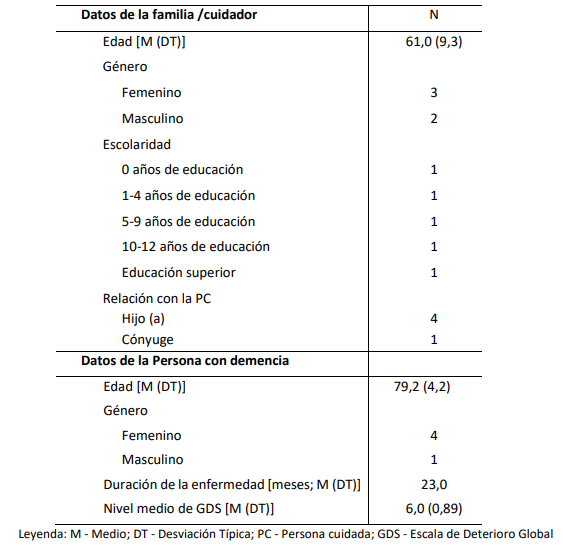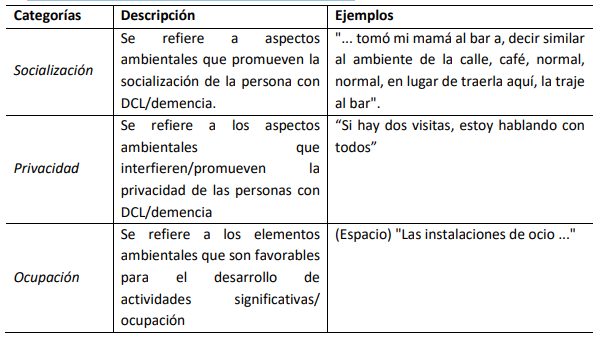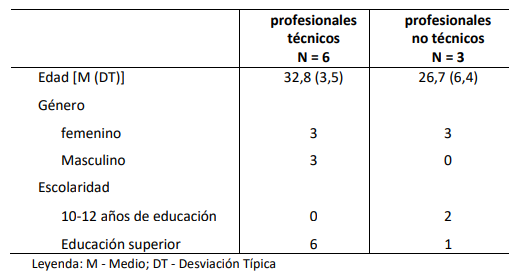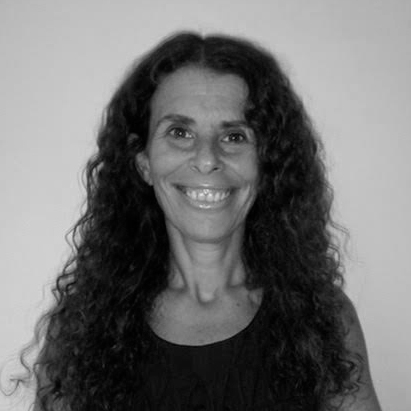Inclusive Habitats for Dementia - Follow-up Report

This report aims to analyze the continuation of the activities of the habINdem - Inclusive Habitats for Dementia project, whose main objective is to gather guidelines to adapt to institutional spaces, the home and outdoor spaces for people with cognitive impairment or dementia. The project in question is financed by CENIE (International Centre for Ageing, University of Salamanca) through the V-A Interreg Spain-Portugal cooperation programme and POCEPT between 2014 and 2020 is being implemented by the promoter Santa Casa de Misericórdia de Riba De Ave in collaboration with the Centro de Atendimento e Serviços 050+, Associação. The project began on May 31, 2019 and has a duration of 10 months.
Therefore, this report presents the first description of the planned activities compared to the activities carried out, the analyses of the deviations from the application design and the obstacles in the implementation of the project, and finally, the future activities to be developed are presented.
Progress of activities
A) Calendar of planned activities (from 31 May to 31 October 2019)
The first five months of the habINdem project include the following activities:
1) Literature review (M1-M3) - no changes, ongoing
2) Focus groups with the wider community (M4) - changed, completed
3) Focus groups with practitioners and policy makers (M4) - changed, ongoing
5) Creating different profiles of people with dementia - People (M5) - no change, ongoing
B) Description of activities
1) Literature Review
The original schedule for the completion of this task from M1 to M3 However, due to the specificity of the subject matter, and the tasks set in the project implementation, this task will be executed during the total time of the project - permanent task.
Examples of references consulted are:

Table 1 (continued) - Examples of literature consulted

2) Focus group with the general community
After reflection and analysis of the international literature on the topic of habitats/design for people with dementia, the project technical team decided that the replacement of a focus group with the general community for two moments of information gathering, including a Focus Group with people with mild cognitive impairment (MCI)/mild or moderate dementia and a Focus Group with family members of people with MCI/dementia, would be a more enriching methodology. In this sense, these activities were carried out at the end of the fourth month of the project, as described in the following table.
Table 2 - Methodology and dates of the different stages of data collection

The participants of the Focus Groups were signaled from the Continuous Care Unit (CCU) of the Santa Casa de la Misericordia in Riba de Ave by the technicians of that Unit. The groups were held at the CCU facilities by two professionals in the area of gerontology who are part of the technical team of this project.
The Focus Group with people with mild or moderate dementia was held with 4 people and the Focus Group for family members/caregivers of patients with dementia had 6 participants. The main characteristics of the participants are in the following tables (Table 1 and Table 2).
Table 1 - Characteristics of Focus Group participants for people with MCI/dementia (n = 4)

Table 2 - Characteristics of Focus Group participants for family members/caregivers of people with DLD/dementia (n = 5)

2.1) Preliminary results
Currently, the content obtained from the Focus Groups is being analyzed through content analysis techniques. The general objective of the Focus Groups was to assess people's perceptions of the environmental barriers that limit the independence, autonomy and well-being of people with cognitive impairment, whether in a domestic, institutional or external context.
Specifically, in the Focus Group with people with MCI/dementia, 11 categories emerged, the most reported being Negative Consequences, followed by Negative Design. The following table (Table 3) presents the emerging categories, their description and some examples of each category.
Table 3 - Examples of Categories Emerging from Focus Group Content Analysis with People with DLB/Dementia

Table 3 - Examples of categories emerging from the Focus Group Content Analysis with people with DLB/dementia

From the analysis of the Focus Group content with the family/informal caregivers of people with MCI/dementia, 10 categories emerged. In this case, the most frequent category was Positive Design, followed by Negative Design. Table 4 shows the different categories that emerged, their description, with examples for each one.
Table 4 - Examples of Categories Emerging from Focus Group Content Analysis for Family Members of People with DLB/Dementia
.png)
Table 4 - Examples of Categories Emerging from Focus Group Content Analysis for Family Members of People with DLB/Dementia
3) Focus group with professionals and policy makers
This was the activity that has undergone major changes compared to the provisions at the proposal stage. The Focus Group with professionals and policy makers foreseen in the proposal was replaced by a Focus Group with professional technicians and another with a group of non-technical professionals. The objective was to gather information/knowledge from professionals in different categories, but with direct contact with people with DLD/dementia. In this sense, professionals from the areas of social science or health were invited to participate. The decision to separate technical and non-technical professionals was related to prior knowledge of each professional category and for reasons of professional hierarchy. This activity was carried out at the beginning of the fifth month of the project, as described in the following table.
Table 5 - Methodology and date of the different stages of data collection

The participants were selected from the CCU team of the Santa Casa da Misericórdia de Riba de Ave. Like the Focus Groups with patients and families/caregivers, respectively, these Focus Groups will also run within the CCU and under the dynamism of the same gerontology professionals. The Focus Group for technical professionals had six participants, of which 1 doctor, 2 nurses, 1 physiotherapist, 1 occupational therapist and 1 social worker. Finally, the Focus Group for non-technical professionals had 3 operating assistants. The key demographic characteristics are described in Table 3.
Table 3 - Socio-demographic characteristics of the participants in Focus Groups for technical professionals and for non-technical professionals

In addition to the focus groups, the team felt that interviews with experts on the subject of the project could contribute to a greater understanding of the subject and to the collection of suggestions for habitat adaptations. The complexity of bringing together experts from fields as diverse as academia, architecture and psychiatry led to the need for a readjustment of the work plan and the introduction of interview scripts. As of the date of this report, 3 interview scripts have been submitted (medical, architectural and academic), but only the academic responded. The others are expected to be received in order to proceed with their analysis.
3.1) Preliminary results
As in point 2.1 of this report, the content obtained by the focus groups is being analysed through content analysis techniques. Specifically, from the focus group analysis conducted with technical staff, 12 categories emerged. In this case, the category most often was Positive design, followed by Negative consequences and Positive consequences. The emerging categories are described in Table 6, along with their description and some examples.
Table 6 - Examples of Emerging Focus Group Content Analysis Categories Conducted with Institutional Staff

Table 6 - Examples of emerging categories of Focus Group content analysis conducted with the institutions' technical staff
.png)
In the Focus Group analysis conducted with the non-technical staff, 10 categories emerged. In this case, the most frequent category was Negative Consequences, followed by Negative Design. The following table brings together the emerging categories, their description and gives some examples of the identified categories.
Table 7 - Examples of emerging Focus Group content analysis categories conducted with non-technical staff from the institutions

Table 7 - Examples of emerging Focus Group content analysis categories conducted with non-technical staff from the institutions

4) Create different profiles of people with dementia - People
The creation of the Persons is proceeding with a one month delay due to the change of dates of the activities described above. However, the results obtained from the analysis of the focus groups and interviews will make an important contribution to the creation of the People.
Annex 1 presents a summary of the emerging categories considering the different Focus Groups.
Table 8 - Description and overview of the categories found in the content analysis according to the Focus Groups.








